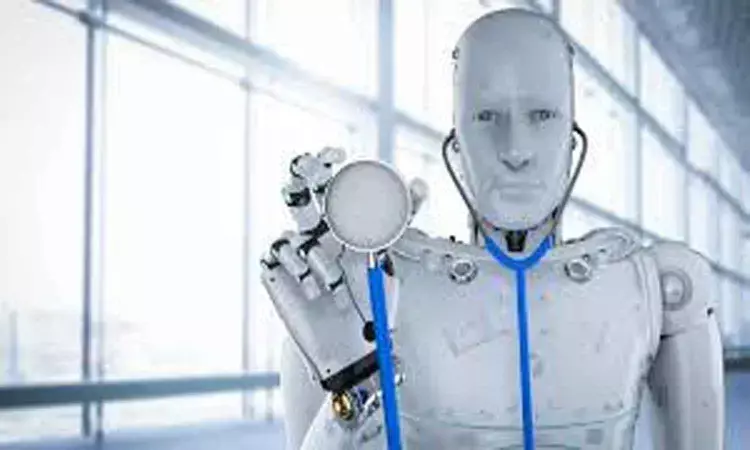- Home
- Medical news & Guidelines
- Anesthesiology
- Cardiology and CTVS
- Critical Care
- Dentistry
- Dermatology
- Diabetes and Endocrinology
- ENT
- Gastroenterology
- Medicine
- Nephrology
- Neurology
- Obstretics-Gynaecology
- Oncology
- Ophthalmology
- Orthopaedics
- Pediatrics-Neonatology
- Psychiatry
- Pulmonology
- Radiology
- Surgery
- Urology
- Laboratory Medicine
- Diet
- Nursing
- Paramedical
- Physiotherapy
- Health news
- Fact Check
- Bone Health Fact Check
- Brain Health Fact Check
- Cancer Related Fact Check
- Child Care Fact Check
- Dental and oral health fact check
- Diabetes and metabolic health fact check
- Diet and Nutrition Fact Check
- Eye and ENT Care Fact Check
- Fitness fact check
- Gut health fact check
- Heart health fact check
- Kidney health fact check
- Medical education fact check
- Men's health fact check
- Respiratory fact check
- Skin and hair care fact check
- Vaccine and Immunization fact check
- Women's health fact check
- AYUSH
- State News
- Andaman and Nicobar Islands
- Andhra Pradesh
- Arunachal Pradesh
- Assam
- Bihar
- Chandigarh
- Chattisgarh
- Dadra and Nagar Haveli
- Daman and Diu
- Delhi
- Goa
- Gujarat
- Haryana
- Himachal Pradesh
- Jammu & Kashmir
- Jharkhand
- Karnataka
- Kerala
- Ladakh
- Lakshadweep
- Madhya Pradesh
- Maharashtra
- Manipur
- Meghalaya
- Mizoram
- Nagaland
- Odisha
- Puducherry
- Punjab
- Rajasthan
- Sikkim
- Tamil Nadu
- Telangana
- Tripura
- Uttar Pradesh
- Uttrakhand
- West Bengal
- Medical Education
- Industry
Could robots take care of COVID-19 patients- a wake-up call for robotics research

PITTSBURGH--Physical distancing is an important aspect of protection from coronavirus. For medical personnel, there is a need for specialized personal protective equipment. All this in an epidemic like this reminds of robots- only if they could take charge of patient care,
Robots could perform some of the "dull, dirty and dangerous" jobs associated with combating the COVID-19 pandemic, but that would require many new capabilities not currently being funded or developed, an editorial in the journal Science Robotics argues.
The editorial, published today and signed by leading academic researchers including Carnegie Mellon University's Howie Choset, said robots conceivably could perform such tasks as disinfecting surfaces, taking temperatures of people in public areas or at ports of entry, providing social support for quarantined patients, collecting nasal and throat samples for testing, and enabling people to virtually attend conferences and exhibitions.
In each case, the use of robots could reduce human exposure to pathogens -- which will become increasingly important as epidemics escalate.
"The experiences with the (2015) Ebola outbreak identified a broad spectrum of use cases, but funding for multidisciplinary research, in partnership with agencies and industry, to meet these use cases remains expensive, rare and directed to other applications," the researchers noted in the editorial.
"Without a sustainable approach to research, history will repeat itself, and robots will not be ready for the next incident," they added.
In addition to Choset, a professor in CMU's Robotics Institute and one of the founding editors of Science Robotics, the authors of the editorial include Marcia McNutt, president of the National Academy of Science; Robin Murphy of Texas A&M University; Henrik Christensen of the University of California, San Diego; and former CMU faculty member Steven Collins, now at Stanford University.
Choset stressed that the idea behind the editorial wasn't solely to prescribe how robots might be used in a pandemic.
"Rather, we hope to inspire others in the community to conceive of solutions to what is a very complicated problem," he explained.
Choset also emphasized that, like robots, artificial intelligence could help in responding to epidemics and pandemics. Researchers at Carnegie Mellon, for instance, are performing research to address humanitarian aid and disaster response. For that task, they envision a combination of AI and robotics technologies, such as drones. Human-robot interaction, automated monitoring of social media, edge computing and ad hoc computer networks are among the technologies they are developing.
Hina Zahid Joined Medical Dialogue in 2017 with a passion to work as a Reporter. She coordinates with various national and international journals and association and covers all the stories related to Medical guidelines, Medical Journals, rare medical surgeries as well as all the updates in the medical field. Email: editorial@medicaldialogues.in. Contact no. 011-43720751
Dr Kamal Kant Kohli-MBBS, DTCD- a chest specialist with more than 30 years of practice and a flair for writing clinical articles, Dr Kamal Kant Kohli joined Medical Dialogues as a Chief Editor of Medical News. Besides writing articles, as an editor, he proofreads and verifies all the medical content published on Medical Dialogues including those coming from journals, studies,medical conferences,guidelines etc. Email: drkohli@medicaldialogues.in. Contact no. 011-43720751


